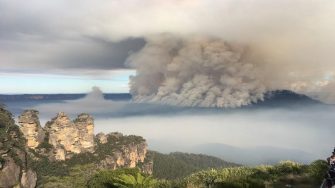
Synopsis
In 2021 the UNSW Palaeoecology Lab will be working in the Blue Mountains on the Australian Research Council-funded (DP20) project Shaping a sunburnt country: fire, climate and the Australian landscape. This project is a collaborative project with geoscientist at the University of Wollongong.
One aspect of this project aims to explore the recent history of fire in the landscape. There are several projects (to suit a variety of interests) but the primary project we are working on in 2021 is characterising charcoal sampled from recent fire events (of known severity). We already know that charcoal produced under very ‘hot’ fires is different physically and chemically. So, we are very interested in quantifying how charcoal reflects different fire severity (e.g. using physical parameters like size, shape, porosity; chemical composition including d13C; using FTIR, SEM), trying to address the question as to whether fire severity has altered over the last ~100 years. One component of this involves collaboration with Dr Karen Privat in the UNSW Electron Microscope unit, with the aim of characteristing the physical features of different charcoal using SEM.
Aims
This work is part of a ‘calibration’ exercise whereby we aim to use this information to better characterise fire regimes over longer temporal perspectives than is available from instrumental records. For this, we use charcoal isolated from the well-dated (using 14C) sediments accumulating in swamps (Temperature Highland Peat Swamps on Sandstone, an Endangered Ecological Community) or the historic (old!) reservoirs of the Blue Mountains. Work overseas has suggested that influx of charcoal in sediments is a good proxy for area burnt, and the ‘peak component’ of charcoal accumulation has been used to estimate fire frequency through time. We hope to test these ideas in an Australian setting by comparing recent fires (e.g. fire extent, proximity to the sample site, severity characterised using remote sensing) with how they are ‘expressed’ in the charcoal records in the sediments.
Student benefits
This is relatively simple analytical work (that is, it is easy to learn) and it addresses one of the biggest issues in the contemporary environment: Is fire getting more severe? The work has an interesting mix of field (sampling) and laboratory work (e.g. in Mark Wainwright Analytical Centre) and potentially includes spatial analyses (e.g. modelling, or generating transfer functions). It would suit students interested in various aspects of environmental management, human impact and climatic variability. Ideally, students would have completed GEOS1701, GEOS2711 and GEOS3761, but that is not entirely necessary.
